|
Kamikaze Jet Hijacking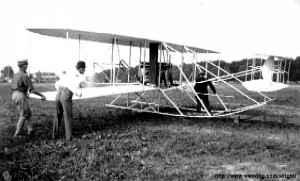 Intentionally crashing a plane into a target as a form of suicide bombing is nothing new. Everyone knows about Japanese Kamikaze pilots during World War II, who tried to punch their planes through the deck of Allied warships, which is an effective tactic if your target is conveniently filled with ammunition and/or fuel.
Intentionally crashing a plane into a target as a form of suicide bombing is nothing new. Everyone knows about Japanese Kamikaze pilots during World War II, who tried to punch their planes through the deck of Allied warships, which is an effective tactic if your target is conveniently filled with ammunition and/or fuel.
The suicide hijacking is an especially effective form of terrorism, both for its hip, modern appeal and its multifaceted fear factor—you can be afraid that your own plane will be hijacked and crashed, or that your throat will be cut during the hijacking, or that you will be hit by a hijacked plane, or that your government will be destabilized by a plane crashing into its equivalent of the White House. Airplanes have only been available for the last century or so. Their effectiveness as weapons is even more recent, since the fuel capacity and maximum speed of a 1909 Wright Military Flyer would hardly dent a barn, let alone inspire mass terror.
In 1974, a psychotic celebrity stalker named Samuel Byck ended his not-illustrious non-career as a homicidal maniac by attempting to storm a parked aircraft and hijack it, with the intent of crashing it into the White House in order to kill Richard M. Nixon. The plan was not well thought out. Rather than buy a ticket and hijack a plane in flight, he chose to shoot his way onto the plane at the airport with the predictable result that he was gunned down by the police. Wounded, he committed suicide rather than surrender.
It's been discussed, planned and thwarted so many times that the only surprising thing about September 11 was the fact everyone was "shocked, shocked" to see it actually happening on national TV. In fact, it had already been seen on national TV—during the mid-80s broadcast of the 1981 theatrical release Escape From New York, which opens with suicide terrorists hijacking a jumbo jet and crashing it into a NYC skyscraper. But never mind that. In the "reality-based community," the earliest documented warning of what lay ahead for the United States currently appears to have come in late 1992 and early 1993, when informants working for the Egyptian and U.S. governments reported that a terrorist who had infiltrated the Sudanese Air Force was planning to bomb an Egyptian presidential mansion then crash his fighter into the U.S. Embassy in Cairo.
By the time of the above incident, people were beginning to wake up the possibility that someone could pull off a suicide hijacking, and the Pentagon commissioned a study to look into the risk in 1993. In early 1994, a disgruntled FedEx worker tried unsuccessfully to storm a jet's cockpit and crash the plane into a company facility. It didn't take long for the concept to advance dramatically. The date was September 11, 1994. YES, THAT'S RIGHT, SEPTEMBER 11. After downing a lot of crack cocaine and booze, Frank Eugene Corder climbed into an airplane and took off. Had he spent a little less time partying, the crash would have come that evening. Instead, around 2 a.m. the morning of Sept. 12, Corder attempted to crash the stolen airplane into the White House. He missed by a matter of yards. Like Timothy McVeigh, Corder was a Army veteran. Like Jose Padilla, he had passed a few stints in prison. Like Mohammed Atta and Zacarias Moussaoui, he was a student pilot. He was officially designated a lone, uh, planeman and quickly forgotten.
There's no direct evidence that Corder's 9/11 misadventure inspired Yousef and KSM to dream their dream of a future 9/11, but the timing is pretty suggestive. al Qaeda operatives are known to follow the news closely, and it's well documented that al Qaeda's 9/11 was plotted around this time. After his capture in 2003, KSM told his U.S. interrogators that the two terrorists had flipped through atlases and tourist guides, looking at pictures of American skyscrapers and picking some as targets, including the World Trade Centers, the Transamerica Building in San Francisco and the Sears Tower in Chicago. A co-conspirator captured in 1995 told U.S. and Philippines authorities that they also planned to target U.S. government buildings, including CIA headquarters and the Pentagon. Their plan was simple and direct. Hijack commercial airliners and crash them into the buildings. (They also considered using stolen airplanes loaded with explosives or chemical weapons.) Yousef recruited Abdul Hakim Murad, a U.S. trained pilot and a childhood friend, to take control of the cockpit. Another phase of the plan would place bombs on 11 U.S.-bound aircraft over the Pacific Ocean, timed to detonate over a 48-hour period. Khalid and Yousef flew tests through November and December 1994, in which they worked on the bombing phase of Bojinka. Meanwhile, half a world away, a group of Algerian operatives were demonstrating how the hijacking phase could work.
The plot had been scheduled for New Year's Eve, but the operatives carrying it out had moved it up to Christmas Eve due to concerns about being caught. The change of plans ended up putting the flight on a refueling stop before it could hit the tower, and French commandos stormed the plane, successfully killing the hijackers. The plot has never been directly tied to Yousef's plan except through the two cells' mutual connections to bin Laden, but certainly the timing raises a few questions, coming hot on the heels of a test detonation of a Bojinka bomb on a Philippine Airlines flight just two weeks earlier. Regardless of whether Yousef and Khalid were directly connected to the plot, the one element that led to the failure of the Eiffel Tower attack was notably corrected in the September 11 attack: all the 9/11 flights were fully fueled when they were seized. Murad was arrested in January 1995, and Yousef was arrested the following month. In addition to seizing all the documents used by their Manila terror cell, the interrogation of Murad provided extensive and fairly specific information about the kamikaze-hijacking scheme, including potential targets and the strategy. A Philippines police report on the interrogation indicated that Murad (and possibly co-conspirators) would "board any American commercial aircraft pretending to be an ordinary passenger, then he will hijack said aircraft, control its cockpit and dive it at the CIA headquarters."
The procedures used during the event became part of standard Secret Service planning, and they were applied to national events right up until Sept. 11, 2001. George W Bush was himself protected by such contingency planning during the 2000 Republican Party convention. NORAD ran exercises on how U.S. Air Defenses would handle hijackers who seized planes and used them as missiles. The tests were planned and conducted from 1999 through 2001, according to USA Today. One of the proposed drills had a jet being crashed into the Pentagon, but NORAD decided not to run that one (which was scheduled for the summer of 2001) because it was "too unrealistic." Even the Library of Congress knew about terrorist plans to crash airplanes into government buildings, for Christ's sake. "Suicide bomber(s) belonging to al Qaeda's Martyrdom Battalion could crash-land an aircraft packed with high explosives (C-4 and semtex) into the Pentagon, the headquarters of the Central Intelligence Agency (CIA), or the White House," said a September 1999 Library report. While all these warning bells were sounding, dozens of al Qaeda operatives were descending on the United States, many of them signing up for pilot training at America's fine flight schools. Despite the fact that Murad and others had trained here for airborne suicide missions, and despite the fact that Yousef and other captured terrorists repeatedly threatened that American was riddled with suicidal terrorist soldiers, there was no focus on U.S. flight schools that catered to Middle Eastern students.
On September 11, 2001, the topic of kamikaze hijackings suddenly became MUCH more interesting to everyone, as two airplanes smashed into the World Trade Center towers and utterly obliterated them, and a third crashed into the Pentagon—just as Ramzi Yousef had envisioned six years earlier. A fourth plane (downed by its own passengers) is believed to have been targeted for the White House, just like Samuel Byck in 1974 and Charles Eugene Corder in 1994. Not surprisingly, since this event, there has been a great deal of attention to the risks of suicide hijackings. A few hijacking attempts since September 11 have been foiled by various parties; some may have been intended as suicide bombs, but there aren't any plots that have been proven beyond a reasonable doubt. Al Qaeda is known to embrace the philosophy of "If it ain't broke, don't fix it," so it's pretty reasonable to assume that it could happen again.
UK Prime Minister Tony Blair just happened to be vacationing in Sharm el-Sheikh at the time. The Egyptian government announced that the crash absolutely didn't have anything to do with terrorism before the airplane's tail fin disappeared beneath the waves, and no one talks about it any more. Be it far from Rotten.com to question the integrity of the Egyptian government. Regardless of that case, and regardless of what the future holds, one thing is clear. There was plenty of warning that terrorists might use airplanes as missiles. You can split hairs about what the appropriate response to those warnings should have been. After all, there have been plenty of warnings that California might fall into the ocean in a cataclysmic earthquake, but unless it happens, no one will care. Nevertheless, if anyone tells you that they "don't think anybody could have predicted that these people would take an airplane and slam it into the World Trade Center, take another one and slam it into the Pentagon—that they would try to use an airplane as a missile, a hijacked airplane as a missile," rest assured that person is lying or woefully, woefully misinformed.
Timeline
|
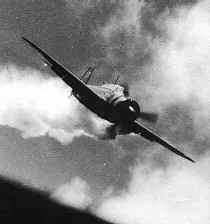 The Japanese use of kamikaze techniques in WWII was technically terroristic in nature, since its intent was divided pretty equally between destroying military targets and freaking out enemy soldiers. However, it did take place within a context of military battle and it was not used on civilian targets. The Japanese efforts were first seen in action near the
The Japanese use of kamikaze techniques in WWII was technically terroristic in nature, since its intent was divided pretty equally between destroying military targets and freaking out enemy soldiers. However, it did take place within a context of military battle and it was not used on civilian targets. The Japanese efforts were first seen in action near the 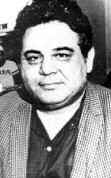 While the psychosis (or lack thereof) afflicting suicide terrorists is considered debatable, their plans are generally a lot better thought out than Byck's. Suicide plane attacks, including hijackings, have long been contemplated, attempted and even successfully executed by an eclectic mix of assassins, madmen and terrorists.
While the psychosis (or lack thereof) afflicting suicide terrorists is considered debatable, their plans are generally a lot better thought out than Byck's. Suicide plane attacks, including hijackings, have long been contemplated, attempted and even successfully executed by an eclectic mix of assassins, madmen and terrorists. 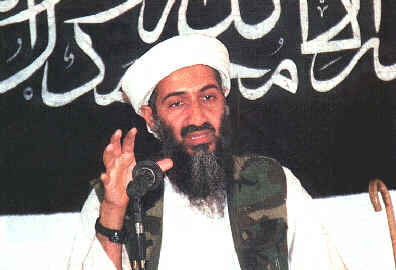 The terror plot, which was linked to
The terror plot, which was linked to 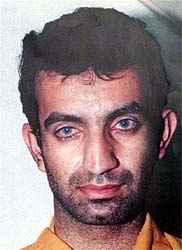 Well, forgotten by some. Just four days later,
Well, forgotten by some. Just four days later,  On December 24, 1994, Algerian Armed Islamic Group hijacked an AirFrance commercial jet and threatened to crash it into the Eiffel Tower. AIG is an Islamic terrorist group tied to
On December 24, 1994, Algerian Armed Islamic Group hijacked an AirFrance commercial jet and threatened to crash it into the Eiffel Tower. AIG is an Islamic terrorist group tied to 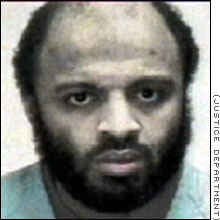 In 1996, despite what you may have heard, federal officials began a several-year-long span of predicting that terrorists might hijack airplanes and crash them into buildings. The White House Counterterrorism Task Force took precautions against a kamikaze airplane attack during the 1996 Olympic Games in Atlanta (which were bombed from the ground despite the government's best efforts to prevent an incident).
In 1996, despite what you may have heard, federal officials began a several-year-long span of predicting that terrorists might hijack airplanes and crash them into buildings. The White House Counterterrorism Task Force took precautions against a kamikaze airplane attack during the 1996 Olympic Games in Atlanta (which were bombed from the ground despite the government's best efforts to prevent an incident). 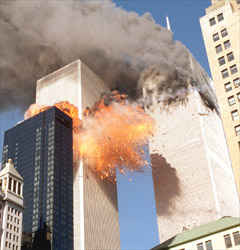 Simply put, no one noticed, and no one cared. So when the Phoenix FBI office reported that terrorists associated with bin Laden were taking flying lessons, nobody did anything about it. And when a flight school reported that a student named Zacarias Moussaoui was taking lessons in steering a plane but had no interested in how to take off or land, the FBI tossed him in a cell on a visa charge and forgot about him.
Simply put, no one noticed, and no one cared. So when the Phoenix FBI office reported that terrorists associated with bin Laden were taking flying lessons, nobody did anything about it. And when a flight school reported that a student named Zacarias Moussaoui was taking lessons in steering a plane but had no interested in how to take off or land, the FBI tossed him in a cell on a visa charge and forgot about him. 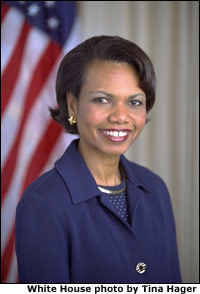 If it hasn't already, that is. For instance, there was the strange case of the Egyptian airliner crash of January 2004. The commercial flight between Cairo and Paris took off, then suddenly changed course and turned around, before abruptly plunging into the sea near Sharm el-Sheikh, an Egyptian resort town.
If it hasn't already, that is. For instance, there was the strange case of the Egyptian airliner crash of January 2004. The commercial flight between Cairo and Paris took off, then suddenly changed course and turned around, before abruptly plunging into the sea near Sharm el-Sheikh, an Egyptian resort town.